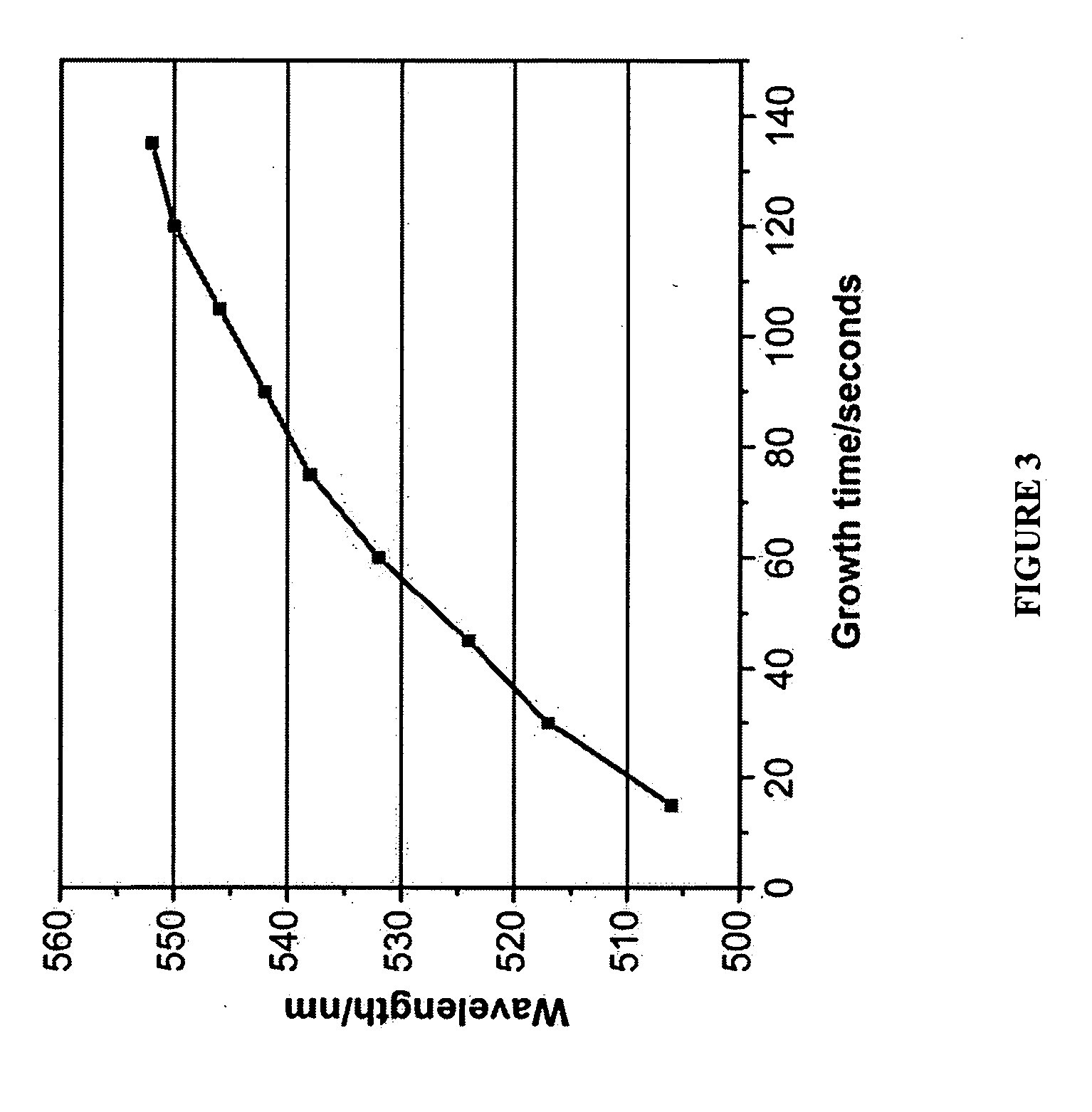Semiconductor nanocrystals as novel antennae for lanthanide cations and associated methods
a technology of lanthanide ions and nanocrystals, which is applied in the field of compositions of luminescent matter, can solve the problems of difficult generation of luminescence by direct excitation of lanthanide ions, poor ability of lanthanide ions to absorb light, and limitations of approaches, etc., and achieves easy tuning and long luminescence lifetimes. , the effect of reducing the number of emission bands
- Summary
- Abstract
- Description
- Claims
- Application Information
AI Technical Summary
Benefits of technology
Problems solved by technology
Method used
Image
Examples
example
Reagents
[0050] The following reagents were employed: Trioctylphosphine oxide [TOPO] (99%), Trioctylphosphine [TOP] (90%), Cadmium Oxide (99.99% puratrem), Selenium Powder (99.99%), n-tetradecylphosphonic acid [TDPA] (98%), Hexadecylamine [HDA], Terbium Nitrate hexa-hydrate (99.998%), anhydrous toluene, and Argon gas. All chemicals were used without purification except toluene, which was distilled prior to use.
Synthesis
[0051] Selenium stock solutions were prepared as follows: 1 mmol of selenium powder was dissolved in 4 mL of TOP and 0.1 mL of toluene through vigorous stirring in a schlenk tube. Excess air was removed through schlenk techniques under a nitrogen atmosphere. The solution was stored under nitrogen until used.
[0052] To synthesize the nanocrystals, the following procedures were followed; the same basic procedure was used in all cases with some different variations. Many batches were made and analyzed, all resulting in a product with consistent properties. For batche...
PUM
| Property | Measurement | Unit |
|---|---|---|
| size | aaaaa | aaaaa |
| size | aaaaa | aaaaa |
| temperature | aaaaa | aaaaa |
Abstract
Description
Claims
Application Information
 Login to View More
Login to View More - R&D
- Intellectual Property
- Life Sciences
- Materials
- Tech Scout
- Unparalleled Data Quality
- Higher Quality Content
- 60% Fewer Hallucinations
Browse by: Latest US Patents, China's latest patents, Technical Efficacy Thesaurus, Application Domain, Technology Topic, Popular Technical Reports.
© 2025 PatSnap. All rights reserved.Legal|Privacy policy|Modern Slavery Act Transparency Statement|Sitemap|About US| Contact US: help@patsnap.com



